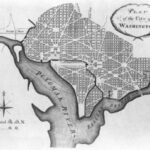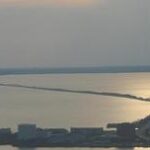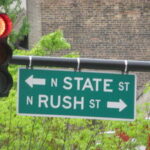As you head north out of Belfast the crowded city streets quickly give way to a two-lane motorway with picturesque private homes with manicured lawns overlooking the Irish Sea. You are at the beginning of one of the world’s most scenic drives – Northern Ireland’s 122-mile long Causeway Coastal Route (CCR).
While the Causeway Coastal Route’s exact ranking among the world’s most scenic routes is up for debate, area guides say it is in the top ten, what isn’t debatable is that everyone should experience the trip at least once. (I put the CCR in the top five most scenic road trips I’ve experienced – a list that includes road trips with incredible views of the Indian Ocean in Durban, South Africa, the Andes mountains in Ecuador and the Pacific Ocean in Oregon.)
The Causeway Coastal Route starts out with natural beauty – both land and sea. To the east running parallel with the road is the Belfast Lough, a body of water that is the gateway to the Irish Sea. If you were standing along this shore approximately 100 years ago you would have seen the largest vessel ever built at that time heading out from the shipyards of Belfast into the Irish Sea – the Titanic on its maiden and final voyage.
To the west on a hilltop is a rock formation known as Napoleon’s Nose. Located on Cave Hill at 1,200 feet and easily visible from the Causeway Coast Route on a clear day, the hill is an area landmark that has gained notoriety because of an outcropping that appears to resemble the nose of emperor Napoleon Bonaparte. A quick 11-mile jaunt from Belfast and you are in the small town of Carrickfergus, with a population of only 27,000. The town has a unique American connection – it hosts a complex that includes the Andrew Jackson Cottage and the US Army Rangers Center. Why Andrew Jackson and why a facility honoring the US Army Rangers? Jackson, the seventh US president, was born in the United States two years after his parents emigrated from the Carrickfergus area for America. The US Rangers Center was established to commemorate the US Army’s 1st Ranger Battalion, which was sanctioned, recruited and trained in and around Carrickfergus during WW II. If you want a little older history, the 800 year old Carrickfergus Castle is adjacent to the town’s small picturesque harbor and is open to the public.
The attractions in Carrickfergus aren’t the only historical items of interest along the Causeway Coastal Route. The CCR takes you past field after field with sheep and lamb grazing as well as many non-descript, but historically important caves dotting the countryside. The caves, some visible from the roadway, played an important part in maintaining the area’s heritage. When the Gaelic language was outlawed families would meet in caves away from prying eyes so that children could learn the tongue of their ancestors. In addition, the area’s rocky terrain helped Catholics as they took to the forests and fields in a dramatic step to preserve their religion which was outlawed in the 17th Century. Itinerant priests would say Mass in secret on ‘mass rocks.’ Mass rocks were stones taken from a church ruin or were naturally formed rocks that served as altars for church services. After meeting in secret and conducting the mass at the mass rock, the priest would move on to his next location to stay one step ahead of the authorities. Some mass rocks still exist and are visible today while driving the CCR.
Driving the route also provides for plenty of incredibly impressive views of the coast and what lies across the water – the limestone cliffs of Scotland. Although locals told me that the weather isn’t always perfect, during my trip on the Causeway Coastal Route the weather was incredible with an abundance of sunshine and unlimited visibility. If you want to see what cliffs look like up close on the Northern Ireland side of the Irish Sea and you are the adventurous type who doesn’t mind a good walk, the Carrick-a-rede bridge near Ballycastle is as impressive as it is daunting. The swaying bridge, which is made of rope, is 20 feet long and sits 98 feet above the coastline. It connects the mainland to a very small rocky island. For those who aren’t excited about walking across a rope bridge, the Carrick Bridge Viewpoint is conveniently located directly on the CCR just prior to Ballintoy. It provides a dramatic overlook of the bridge, the area’s coastline and views of Scotland on the other side of the Irish Sea.
Next up is the most popular attraction in all of Northern Ireland, the Giants Causeway. It is Northern Ireland’s only UNESCO World Heritage Site. Volcanic activity some 60 million years ago created 38,000 geometric columns as well as thousands of stones that appear to be almost identical and obviously man-made – they aren’t manmade. The basalt columns and the stones begin on the shore and lead into the water and in the direction of Scotland on the opposite coast. Local folklore describes a giant named Finn McCool building the walkway into the water to reach and then defeat his adversary on the other side in Scotland.
Getting down the shoreline to see the causeway from the Giants Causeway Visitors Center is easy – it is about a ½ walk mile down a relatively steep hill. There are also shuttle busses available to take you down. Once you reach the shoreline you will encounter people of all ages climbing on and posing for photographs in and around the columns and stones.
Only minutes from the Giants Causeway on the Coastal Causeway Route is the Bushmill Inn. The Inn is a legend in the area. The oldest portion of the Bushmill Inn dates back to 1608 with the main portion being built in the 1820s. A great night’s sleep and fine dining is available as is a trip to the Bushmill’s library to find its secret room. On the second floor of the building near the bar is the library that contains the secret room. The innocuous library gives up its secrets when a specific book case is pushed, revealing that it is actually a door leading to a very large meeting room.
Golf is on everyone’s mind in Northern Ireland and it plays a major role along the Causeway Coastal Route. The Royal Portrush Golf Club, which hosted the Irish Open in 2012, is only minutes away from the Bushmill Inn. Its two courses with a total of thirty-six holes sit along the Irish Sea and are a destination for golfers worldwide. The nearby Dunluce Castle gives castle lovers another opportunity to get their castle fix. This 17th century example is perched precariously on the rocky shoreline right off of the CCR.
The terminus of the Causeway Coast Route is Londonderry, Northern Ireland’s second largest city. Boasting the claim of being the only entirely walled city in Ireland, old and new collide when you exit a new and upscale shopping center and within yards pass through the original stone walls and into the city. Visitors can walk 1.3 miles around the tops of the well preserved walls to gain views of the city from every possible angle.
For visitors, the name of the city can cause confusion because some refer to it as Derry in addition to its official name of Londonderry. The dispute is one of the only remnants of the “The Troubles,” the period of time of conflict between the Irish Nationalists and British Unionists. Nationalists/Catholics are likely to refer to the city as Derry; Unionists/Protestants will refer to it as Londonderry. Once inside the walls, a top attraction is The Tower Museum. It is open each week day except Monday and features two permanent exhibits. The “Story of Derry” and “An Armada Shipwreck – La Trinidad Valencera.”
The world is set to take notice of Londonderry since it has been named the 2013 United Kingdom’s Capital of Culture. Plans call for over 172 sports, music, cultural events and festivals throughout the year long celebration that will put the city on the world’s tourism map.
For more information on the Causeway Coastal Route, visit www.discoverireland.com.





